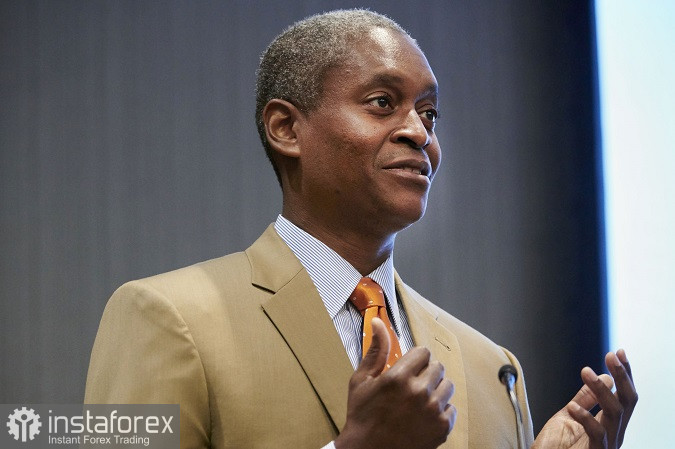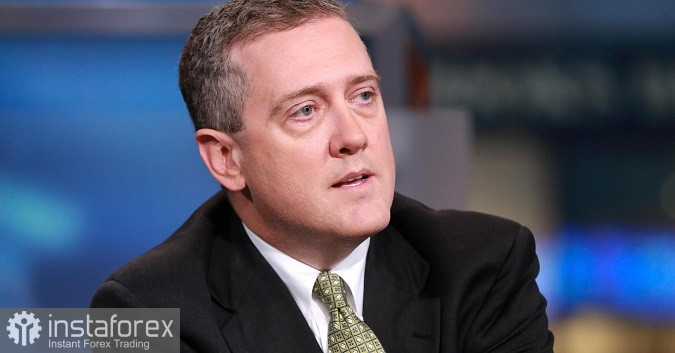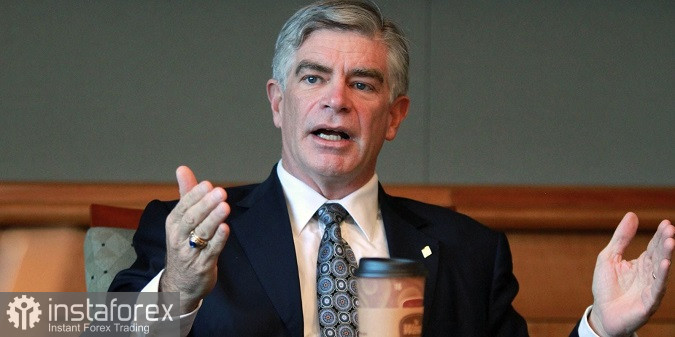Fed policymakers stated the tightening cycle must continue, with the president of the St. Louis Fed Reserve Bank James Bullard saying officials should act quickly and lift their policy benchmark to a 3.75% to 4% range by the end of 2022.

Raphael Bostic, the president of the Fed Reserve Bank of Atlanta, told the Wall Street Journal that he had not yet decided whether to back a 50 or 75 basis point increase at the FOMC meeting on September 20-21.
"At this point, I'd toss a coin between the two," he said in an interview. "We all, as policymakers, understand that inflation is a big problem and is a challenge that we're going to do all that we can to handle."
The Fed funds futures market indicates that investors see an equal likelihood of a 50 basis point or a 75 basis point increase.

"I like the front-loading. I like the idea that you get the rate increases in earlier rather than later," he told CNBC in Jackson Hole, Wyoming on Thursday. "You show you are serious about inflation fighting, and you want to get up to the level that will put downward pressure on inflation. We are at 2.33% right now. That is not high enough," he said, referring to the current Fed funds rate.
"A baseline would be that probably inflation would be more persistent than what many on Wall Street expect and that's going to be higher for longer," James Bullard, the president of the Fed Reserve Bank of St. Louis added. "That's a risk that's underpriced in the markets today."
Other Fed officials which spoke at the meeting in Wyoming refrained from speculating about how high the interest rates should be raised at the next FOMC meeting in September. However, they agreed that rates need to rise.

Esther George, the president of the FRB of Kansas City, who hosts the annual forum, stated that the Fed hasn't yet raised interest rates to levels that weigh on the economy. She added that the Fed could possibly have to keep rates above 4% for a time.
"It's very important that we are clear in our communication about the destination we are headed," she said. "We have to get interest rates higher to slow down demand and bring inflation back to our target," George added.
Both Fed policymakers are set to vote in favor of tightening monetary policy this year. Their comments helped set the stage for a busy two days of Fed speakers. On Friday, the symposium will be headlined by Fed chairman Jerome Powell. His speech is likely to restate his resolve to keep tightening monetary policy to fight inflation.
When asked about how high the Fed should raise interest rates, the Kansas City Fed president stated that the regulator had "more room to go". She also pushed back against market expectations of interest rate cuts in 2023.
"I think we will have to hold – it could be over 4%. I don't think that's out of the question," Esther George said in an interview. "You won't know that, I think, until you begin to watch the data signs."

In an interview with CNBC, Patrick Harker, the president of the FRB of Philadelphia, also stated that the interest rates should be raised.
"There are glimmers of hope on inflation. I just emphasize glimmer - our job is no way done. So we can take that as a positive, but we need to keep acting to raise rates to get inflation under control," he said.
Harker struck a measured tone, downplaying suggestions that a 50 bps move in September would be a dovish move by the Fed.
"Since 1983, the Fed has raised rates 86 times -- 75 of those were under 50 basis points," he said. "So whether it's 50 or 75, I can't say right now, but let's not think that 50 is not a substantial move."
 English
English 
 Русский
Русский Bahasa Indonesia
Bahasa Indonesia Bahasa Malay
Bahasa Malay ไทย
ไทย Español
Español Deutsch
Deutsch Български
Български Français
Français Tiếng Việt
Tiếng Việt 中文
中文 বাংলা
বাংলা हिन्दी
हिन्दी Čeština
Čeština Українська
Українська Română
Română

